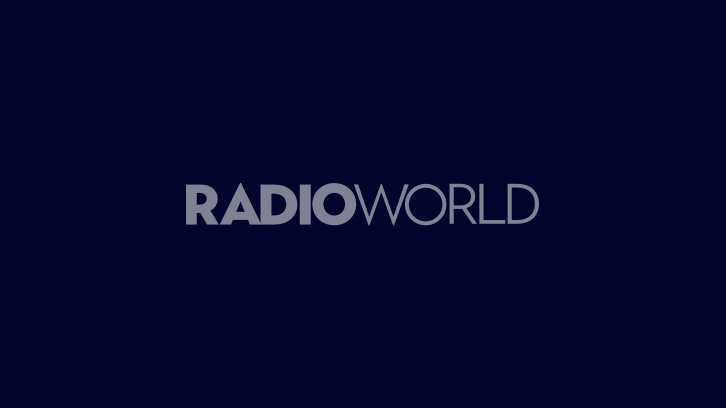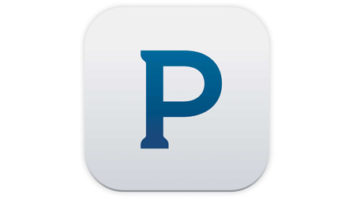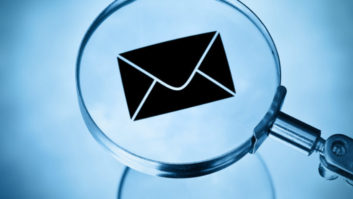LAS VEGAS — Not long ago, the big, shiny attention-grabber for radio in new consumer electronics was satellite.
Internet radio is the new darling; and Pandora leads the charge in name recognition among consumer electronics manufacturers and retailers. This was apparent at the 2011 Consumer Electronics Show. Traditional radio seemed overlooked amid all the new devices displayed at CES, where buzz categories also included 3D televisions and a constellation of 70 to 80 new tablet PCs.
The Internet radio product category certainly is growing, with particular emphasis on applications that can be used to provide Internet radio connectivity in the car.
The day of buying a car that is directly outfitted with Pandora or some other Internet radio music or talk service isn’t here yet. But radio engineers and programming experts say that day is coming and that the industry must pay heed.
In every car?
Executives at Pandora say one of their goals is to be in every car manufacturer’s audio entertainment platform. “We see Pandora as redefining what radio is in a connected world,” said Jessica Steel, executive vice president of business and corporate development in a session on car connectivity.
Traditional radio was founded on a model of one station/one tower broadcasting to many users, she said; satellite followed with a similar delivery pattern, whereas Pandora offers the user music selected specifically for him or her. “We believe this is where radio is going.”
Citing consumer interest, more automakers and receiver manufacturers are charging ahead to offer some sort of Internet radio entertainment in vehicles. “The goal is to make sure we’re integrating our products into consumers’ lives as intensely as possible,” Robert Coyle, national trainer for Pioneer Electronics, told Radio World. “The car is an extension of your house.” Consumers, he said, have wanted Internet connectivity in cars for a long time.
Kenwood USA’s senior vice president of Car Electronics, Keith Lehmann, characterized Pandora access as a trend and said, “We think this is going to be successful. We think it’s going to be pretty strong for 2011.”
The list of automakers offering Pandora connectivity in the vehicle is growing.
Major automakers like Ford, GM, Mercedes, BMW and Mini offer ways to connect a mobile phone to a car and for the user to control their audio entertainment on a big display in the dashboard.
Ford is offering more features on its Sync system (which already includes AM/FM, satellite radio, HD Radio and Pandora connectivity). Now Toyota has begun promoting Entune, a Web-connected dashboard system that streams Pandora and Clear Channel’s iheartradio via a connected smartphone. HD Radio also is a choice on Entune.
Customers “are asking for things like Pandora, just like they asked for a USB connection to their iPods a few years ago,” according to Jim Pisz, corporate manager for advanced technology development at Toyota Motor Sales USA.
Automakers and receiver manufacturers for the car are trying to minimize driver distraction and allow the user to get to his or her Pandora with as few steps as possible.
For example, Toyota considers cognitive strain a big driver distraction issue and says taking even three or four seconds to think about the entertainment display is too much. On its new Entune multimedia dashboard system, Pisz said, Web applications look as they usually do; they’re not modified to conform to Toyota branding.
The 2012 Ford Fiesta can stream Pandora through smartphone apps and control playback through voice commands. The 2012 Ford Mustang is next in line to get Pandora support. Mini added support for Pandora iPhone apps to its in-car Connect system.
New tech means more money to automakers. Ford said shortly after the CES that its average transaction price is up approximately $4,000 from two years ago, and the addition of Sync is one reason, along with new power trains and higher quality ratings. The automaker plans to develop more in-car technology for its vehicles such as entertainment, navigation, cell phone connectivity and Wi-Fi technologies, according to Automotive News.
Success story
Meanwhile, Pandora boasts some 75 million registered users in the United States and says it represents 50 percent of Internet radio listening. According to Steel, half of Pandora’s listening is on mobile devices.
Pandora hired its first director of mobile and emerging media division in January, signaling its interest in becoming more of an entertainment option not just on desktops and dashboards but also on small screens, a competitor for traditional radio there as well. Pandora is now in more than 200 home electronics devices, according to Steel.
The company believes a user’s experience connecting a smartphone for Pandora control of the in-dash radio “has got to be as seamless as interacting with the radio has always been” in the car, she said.
Ford Mustangs will access Pandora through the AppLink feature. At the show, sitting in a Mustang, Pandora founder Tim Westergren told the Los Angeles Times that the introduction of a phone app to control the Internet radio music service on car receivers changed everything for the 10-year-old company.
“Now, if you want to be a radio service, that’s half the market.” He said it feels like Pandora has “reached critical mass.” The personalized Internet radio service wants “to be in every single car on every single phone,” according to the account.
Bringing Internet audio into the car still involves an intermediate step like connecting a smartphone via USB cable or wirelessly over Bluetooth; once connected, the head unit controls the Pandora application on the phone and the user need not look at the phone, just the radio.
Presumably the next desirable step is for Pandora or services like it to be offered in the car directly, with no smartphone required; it’s not clear if automakers are thinking along those lines yet.
Companies like Alpine visited by Radio World at the show clearly are thinking about going beyond Pandora or Rhapsody Internet radio music services and to expand to offering talk or sports programming Internet radio services, apps, connectivity and control in the car at some point. But for now, automaker and OEM receiver offerings remain flexible, displayed as one of several on-screen menu choices, rather than as a dedicated button on the display.
Several aftermarket auto receiver makers have expanded their Pandora offerings. Some, like Sony and JVC, debuted head units with the capability to control Pandora or iheartradio through an iPhone application.
For example, Kenwood has increased its offerings from two models that support Pandora apps on connected iPhones last year, to nine such car stereo receivers for 2011. Pioneer introduced nine Pandora-compatible head units and Alpine expanded its selection of Pandora-controlling head units from one to four.
Pay attention
As automakers and receiver makers quickly develop Internet connectivity for vehicles, traditional radio industry observers say radio needs to pay attention to the new competitor in the dash.
“We’re not there yet, but ubiquitous broadband connectivity in the car is getting closer. It’s something we need to be concerned about,” said Greater Media Vice President Radio Milford Smith.
However, the jury is still out as to whether the ability to receive Internet radio in the car would somehow displace or eclipse traditional radio.
Radio used to “own” the dash; now it’s only one of many audio entertainment services in the car, according to many radio industry observers.
Automakers who spoke to Radio World aren’t projecting a day when traditional AM/FM is entirely absent from the car. But current or planned products certainly make it easier for drivers to ignore traditional radio should they choose to. Loss of its prominence in cars would be a monumental challenge to commercial radio’s business model, in this view.
Other observers say the situation is not so dire. They note that mobile phone companies are beginning to cap the bandwidth that customers can use, moving away from plans offering unlimited bandwidth use. Such limits, according to this line of thought, will result in a narrower pool of consumers who’d want to use Internet radio capability, and pay for it, in the car.
Even consumer electronics experts, speaking at a car connectivity session, had no answer for who would pay for all the bandwidth if everyone wants to use Internet devices in the car. FCC Chairman Julius Genachowski has said a bandwidth squeeze is coming.
One radio engineer said it’s time to challenge Pandora’s claims of 75 million users. “How many people are really listening?” Even if 75 million have tried the service, he asked, how many are listening consistently?
Internet radios for the home were not overlooked at CES, with Grace, Pure, Livio and Sherwood introducing new tabletop radios.
Here are the some of the noteworthy Internet radio devices coming on the market in 2011 as seen at CES. Look for digital radio product news in our next issue.

Toyota said its Entune multimedia system will be available as an option on some models this year. Featured apps are shown. Other features are location-based services, such as personalized traffic, fuel prices, stocks, weather and sports. Media systems
ENTUNE: Toyota said its new multimedia system “offers fully integrated and upgradeable entertainment, navigation and information services.” Entune includes Pandora, XM, iheartradio and HD Radio; it competes with Ford Sync.
After downloading a mobile application and when using a Bluetooth-capable phone with a Toyota vehicle, customers can access personalized content and services. Featured apps include Bing, iheartradio, MovieTickets.com, OpenTable.com and Pandora, as well as location-based services such as personalized traffic, fuel prices, stocks, weather and sports. Toyota Entune also includes support for read-back and replay capabilities for text messages.
Toyota told Radio World the setup can be upgraded via over-the-air software updates. Toyota Entune will be available as an option on some models this year.
FORD: The 2012 Ford Fiesta already can stream Pandora through smartphones apps, and control playback through voice commands. Mustang 2012 owners are next in line for Sync AppLink, the software application that gives Sync users hands-free voice control of smartphone apps. Ford went live with AppLink as a download on www.syncmyride.com, available to 2011 Fiesta owners for mobile apps, including Pandora Internet radio, Stitcher news radio and OpenBeak. Ford says that by adding AppLink compatibility factory-installed to the Mustang, it is showing its commitment to advanced in-car connectivity in more vehicles. It cites studies indicating that 46 percent of adult smartphone users have apps on their phones and 36 percent of those admit to using those apps while commuting.
Car Internet radios:
ALPINE: Receiver maker Alpine is expanding the number of head units that can control Pandora with an app on a USB-connected iPhone from one to four. The radios control multiple Pandora functions and add the ability to create custom stations. The iDA-X305S from 2010 remains in the Pandora-capable lineup and lists for $399. The lowest priced unit is the CDE-122 CD receiver for $180.
JVC: Receiver manufacturer JVC announced four head units that control a Pandora Internet app from a USB-connected iPhone, its first such models. Two CD receivers in the regular series list for $179 and $219. The two Arsesnal CD-receivers list for $189 and $269, respectively.
KENWOOD: Last year, Kenwood showed two head units with Pandora control through an iPhone app; this year it is including Pandora control on nine head units, including Pandora control on all five of its new in-dash multimedia/navigation systems, two CD receivers and two receivers that do not contain CD players. One of the new units is the Excelon CD receiver KDC-X995, which includes a five-line LCD display that can be switched to a larger three-line text for easier viewing. The unit ships in March and will list for $380. Another unit featuring Pandora is the KIV-701 digital media receiver that includes a three-inch color display and plays iPod/iPhone/iTouch audio and video files. The unit ships in April and will list for $450.
LIVIO RADIO: The Michigan-based Internet radio company unveiled two in-vehicle Internet radio devices. The Carmen, Livio’s new FM transmitter, offers auxiliary output capabilities for users looking to take audio files available for free on the Internet into a car or boat. The patent-pending Carmen software automatically launches once users connect the device to their Mac or PC, and records the programming for later listening. With the company’s Bluetooth Internet Radio Car Kit, users can stream the Livio Radio Car Internet Radio App, which makes available 45,000 radio stations including NPR and Pandora Internet stations. They can also use the kit to talk hands-free using Bluetooth controls.
“We’re starting 2011 with an emphasis on the vehicle,” said Livio Radio Founder/CEO Jake Sigal.“With 48 percent of non-smartphone owners expecting to upgrade to a more sophisticated device in 2011, the demand for these products will only grow.”

Pandora capability is integrated into the Pioneer DEH-P6300UB. With a connected iPhone, users can view and select Pandora stations stored on their Pandora account directly on the CD player. PIONEER: Nine of Pioneer’s 2011 automotive in-dash products offer Pandora streaming and control through a connected Apple iPhone. Pioneer’s latest Pandora offerings expand its car electronics lineup with two CD players, three audio/video, two digital media players and two navigation systems. New to its CD player line, Pandora capability is integrated into two units, the DEH-P6300UB and the DEH-P8300UB. With a connected iPhone, users can view and select Pandora stations stored on their Pandora account directly on the CD player. They are available now and list starting at $150 and $180, respectively.
AHA RADIO: Pioneer also brought another Internet radio service, Aha Radio, to two of its navigation systems, the AVIC-X930BT and AVIC-Z130BT, to be available in March for a suggested price of $800 and $1,200, respectively. Using an iPhone with the free Aha Radio Mobile App connected to the new AVIC systems, users can listen to traffic conditions and Facebook and Twitter updates; they can access podcasts and other services such as the “Hungry” and “Coffee” stations, which deliver vicinity search results and directions to restaurant categories listed on Yelp.

Parrot says its Asteroid system is coming to the U.S. by mid-year. It lets drivers make hands-free phone calls, listen to music from various sources and connect to GPS or the Internet. ASTEROID: Parrot says its new Asteroid system lets drivers make hands-free phone calls, listen to music from various sources and connect to GPS or the Internet. The car receiver with Web service apps uses the Android operating system. Asteroid enables listening to music from various sources: USB key, iPhone/iPod, MP3 player, SD card and now Web radio stations where 3G connectivity is available. Music files can also be sent on the car receiver from a mobile phone and via Bluetooth. Parrot says Asteroid will be available in Europe in the first quarter of 2011 and in the U.S. in the second quarter. Price is to be announced.
SONY: The company’s mobile electronics division launched its first two head units with Pandora Link to control a Pandora app on a USB-connected iPhone, as well as on Bluetooth-connected BlackBerry and Android smartphones. Both satellite- and HD Radio-ready units ship this summer. Price is to be announced.
Home Internet radios:

Users push to eject an iPod/iPhone dock on the Contour Internet radio from Pure. PURE: The U.K.-based company offered three Internet radios to U.S. consumers last year. Now it has introduced two additional Wi-Fi-equipped Internet radios.
With Contour, users push to eject an iPod/iPhone dock. It includes video outputs so users can view videos from their iPhone or iPod on their TV. Contour will list for $299. The portable One Flow provides up to 20 hours of listening per charge when used with optional rechargeable ChargePak. Pure also announced an i-20 iPod/iPhone dock. One Flow and i-20 are available at the pure.com/us/store for list $149 and $99, respectively.
The company also launched a new “cloud-based” music service. With FlowSongs users can buy music from Flow-equipped Pure devices like Contour and One Flow. Users tag a song on an Internet radio station or FM, then buy the track, all through their Wi-Fi radio. Tracks will be individually priced between 99 cents and $1.49. A yearly subscription to FlowSongs will be $5.99.
GRACE: The company’s latest Internet radio features a 3.5 inch color display and a Party Mode button that synchs all radios in the new Grace products to deliver the same programming throughout a home. The unit can be controlled from new apps loaded on iPhone/iPod Touches and Android phones. The radio streams Internet stations as well as Pandora, Rhapsody, Sirius Internet Radio, Live 365, iheartradio, NPR, BBC, NOAA and other services.
SHERWOOD: The receiver maker’s Internet streaming appliance is the iPod/iPhone-docking iNet-20. It streams Pandora and Rhapsody music services, features alarm-clock functions and doubles as a photo frame.

Livio Radio and on-demand music service Grooveshark demoed a prototype device that plugs into a cigarette lighter and would allow Livio users to access Grooveshark music in the car and play through the car speakers. Photo by Leslie Stimson Also of interest:
GROOVESHARK, LIVIO: On-demand music service Grooveshark and Internet radio company Livio Radio are partnering in devices for music sharing in vehicles as well as portable units.
Livio will add Grooveshark onto its products. “Our goal is to get Grooveshark into the car and your home with minimal effort,” Livio Radio founder and Chief Executive Officer Jake Sigal said at CES.
Livio and Grooveshark demoed a prototype device that plugs into a cigarette lighter and would allow Livio users to access Grooveshark music in the car and play the tunes through the car speakers. A Grooveshark spokesman told Radio World the company expects the device to be available this summer in the $60 to $80 price range. Grooveshark, based in Gainesville, Fla., was founded in 2006 by Sam Tarantino and Josh Greenberg; they describe themselves as “two guys looking to make a service offering the world on-demand music, accessible on as many devices as possible.” The company says it has 20 million monthly unique visitors to its website at listen.grooveshark.com and a library of 7 million songs.







